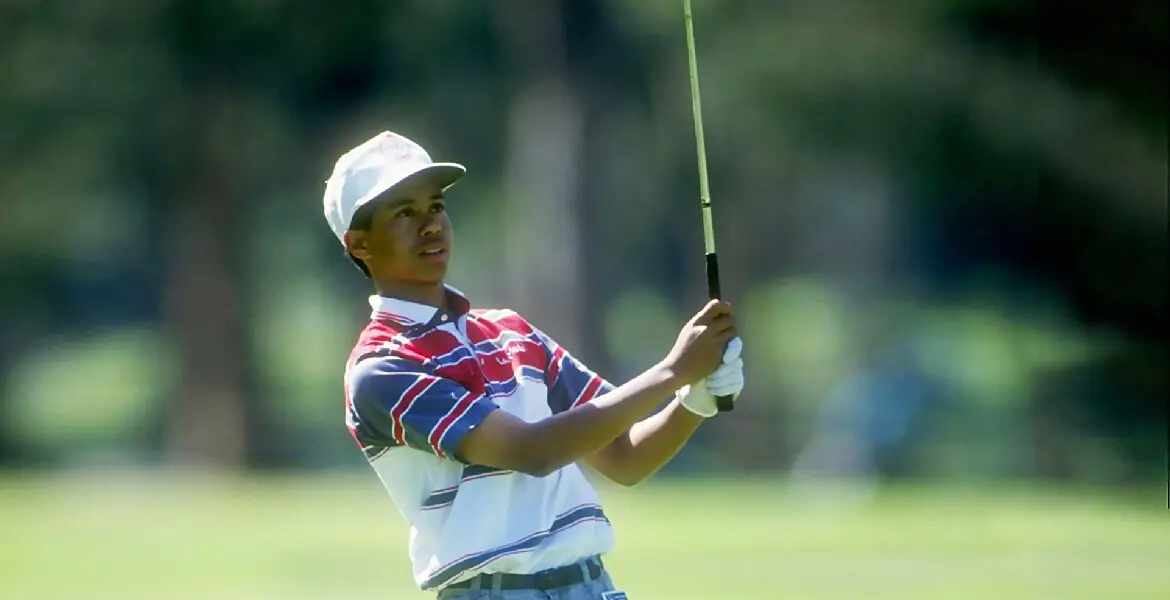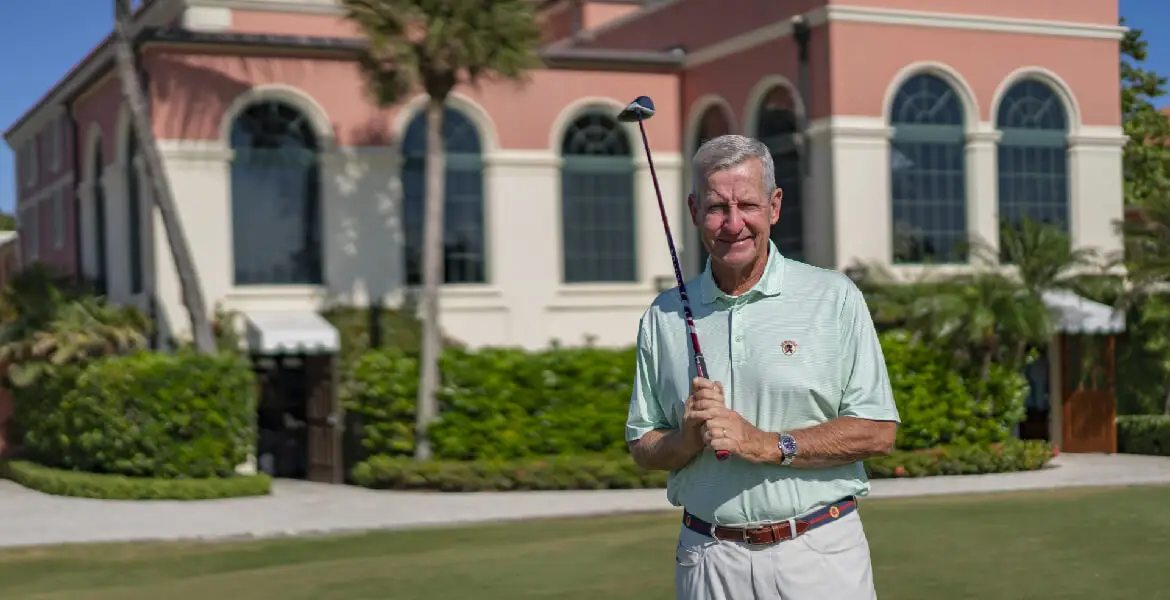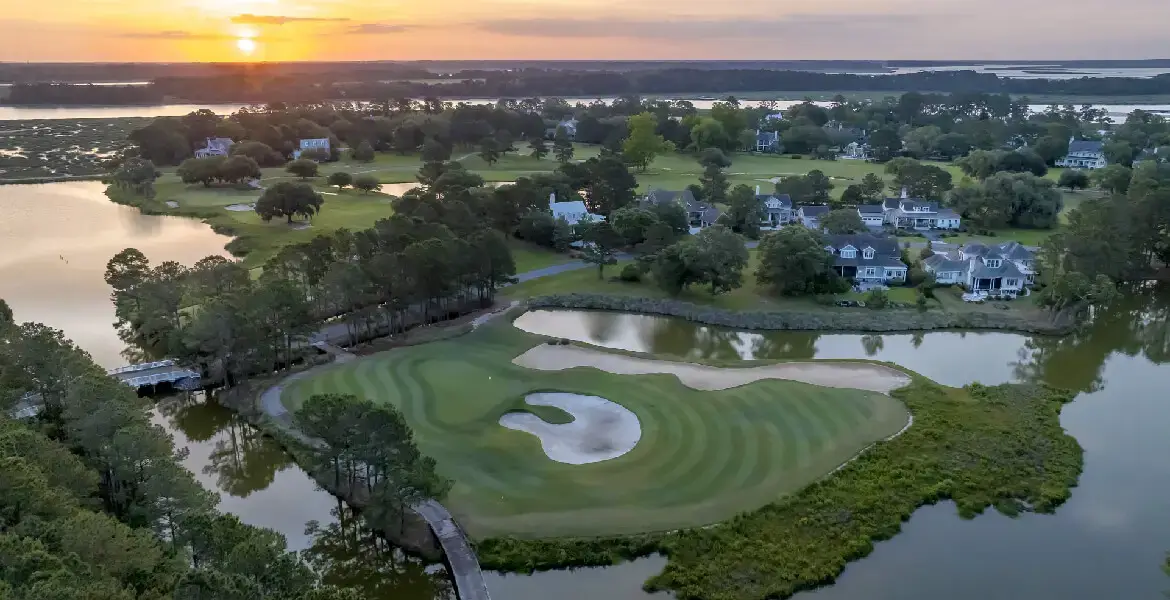Everyone is familiar with the hoary cliché about the Masters not really starting until the back (second) nine on Sunday, but it’s also true that remarkable drama and pivotal moments have taken place on the front (first) nine as well. Some of these early-round shots and putts are more famous than others, but each deserves its place in the sun when the topic turns to Masters lore.
Here are the nine greatest front-nine shots—one for each hole—in Masters history.
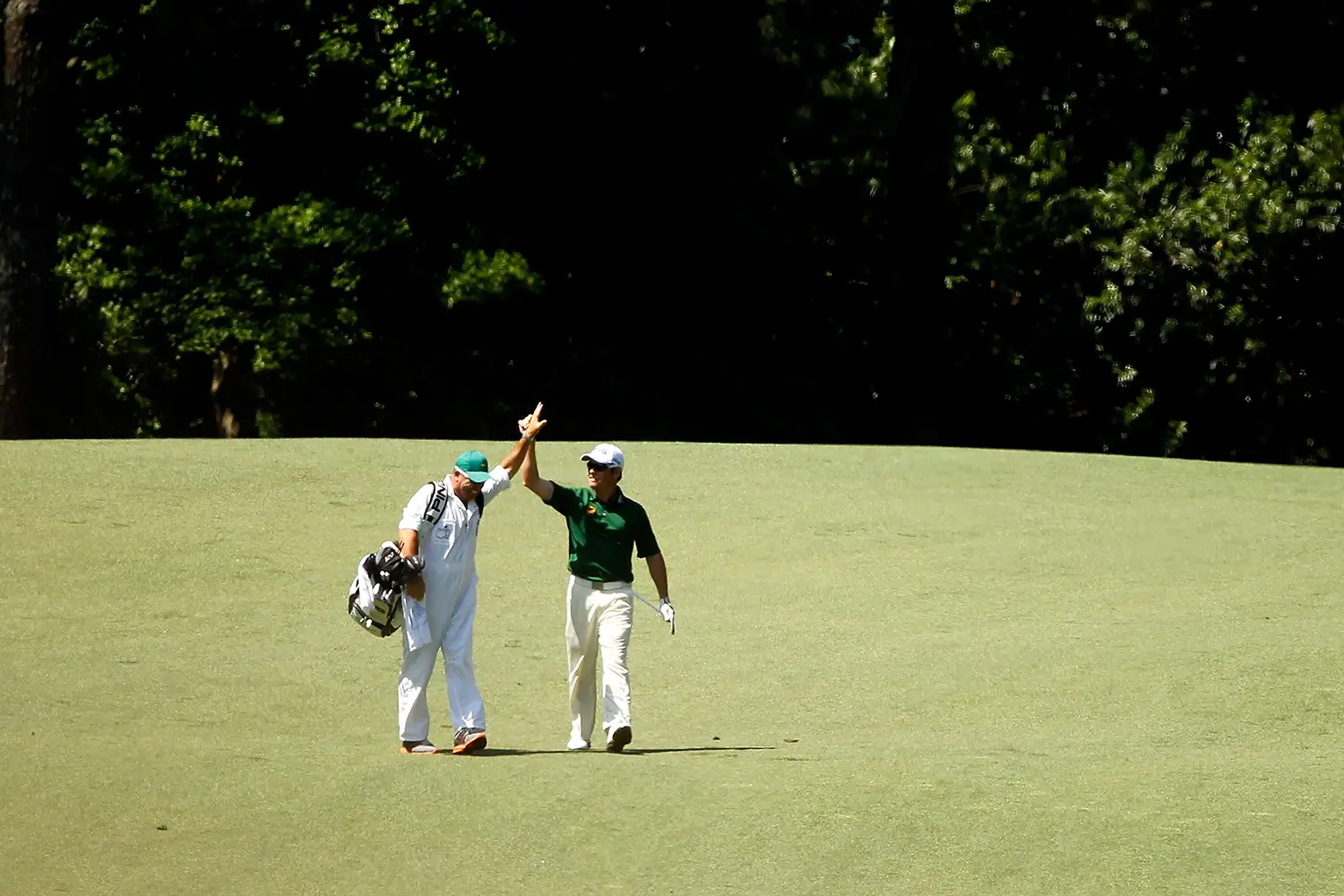
Hole 1: Roberto De Vicenzo (Final Round, 1968)
A dazzling array of chips and putts have electrified the proceedings in recent Masters tournaments, but the ultimate lightning bolt—holing out from the fairway at the first for an eagle 2—has only happened five times, most recently by Retief Goosen in 2011. (And six if you count Asterisk Talley’s effort in the final round of the 2025 Augusta National Women’s Amateur.) None, however, tops the deuce made at the hole known as “Tea Olive” in 1968 by Roberto Di Vicenzo. Two shots back of Gary Player when the final round began, the current British Open champion celebrated his 45th birthday by smacking a long draw off the tee, leaving him with just a 9-iron in. As described by Herbert Warren Wind, the pin was positioned on the extreme left, about 20 feet from the front edge and directly behind the green’s solitary bunker.
“He hit a gorgeous shot,” wrote Wind. “The ball cleared the bunker by about three yards, hopped for the cup, and rolled in—an eagle 2. As quickly as that, De Vicenzo had jumped into a tie for the lead.”
Even after a closing bogey, the popular Argentine finished with 65, which should have earned him a playoff with Bob Goalby. Alas, he attested to his scorecard without noticing that playing partner Tommy Aaron had incorrectly marked him down for a par on the 17th hole instead of the birdie he actually made. The Rules of Golf then in effect stated that he had to keep the higher score, once he signed for it. There would be no playoff. De Vicenzo finished solo second. “Such a stupid I am,” said the rueful Argentine. There would be no Green Jacket in De Vicenzo’s future, but he will always have his perfect 2 to start that fateful round.
Hole 2: Louis Oosthuizen (2012, Final Round)
The only Masters double eagle ever captured by television cameras belongs to Louis Oosthuizen at Augusta National’s par-five 2nd hole in 2012. The affable South African started the final round two shots behind leader Peter Hanson, but just as Hanson was bogeying the first hole, Oosthuizen was making history on the 2nd. After a long, solid drive down the left side of the fairway, Oosthuizen ripped a 4-iron toward the left-to-right-tilting green. Writer Curt Sampson remembered CBS announcer David Feherty’s perfect call:
“The young South African is trying to use those slopes…this could be very nice…this could be very nice…Oh, come to papa! Yes!” From its starting point 253 yards away, the ball slithered unerringly toward the far-right hole location and dropped in, staking him instantly to a two-shot lead. The only Masters albatross ever recorded at Augusta National’s “Pink Dogwood” hole may well have registered louder on the history scale, but for Louis losing in a sudden death playoff to Bubba Watson.
Hole 3: Charl Schwartzel (2011, Final Round)
Now that “Flowering Peach” is drivable at 350 yards, it’s conceivable we could see a “1” made one day. Having said that, 2s aren’t exactly commonplace at hole 3. Props to Patrick Cantlay, who dunked his second shot at the par-four 17th during 2024’s first round, then duplicated the feat here at the 3rd hole in round two. Nonetheless, the shot of all time belongs to Charl Schwartzel.
Tied for second, but trailing leader Rory McIlroy by four shots when the final round of the 2011 Masters began, Schwartzel posted an eye-opening birdie at No. 1 and parred the 2nd, which cut McIlroy’s lead to two. At the 3rd, the South African was able to leave himself a full sand wedge in for his second shot, which he felt was ideal, so that he could use the slope of the green to direct the ball nearer the hole.
“I hit a 3-iron off the tee and then a full sand wedge with some draw spin on it,” Schwartzel recalled later. “It landed in the middle of the green, spun all the way to the left and went in for an eagle. The patrons roared, but I was able to stay pretty calm. Golf is a game of confidence, and I had just come off a victory in South Africa. That instilled a winning feeling I kept during the week.”
Indeed, Schwartzel’s brilliant finish, when he birdied the final four holes to beat Jason Day and Adam Scott by two, usually obscures the brilliant eagle he made at 3 to propel him up the leaderboard.
Hole 4: Jeff Sluman (1992, First Round)
Never considered the game’s longest hitter, 1988 PGA Champion Jeff Sluman arrived at the 213-yard 4th hole in the first round already two-under-par and selected a 4-iron. He then did something that Masters statistician Bill Inglish estimated no one had done after more than 11,000 attempts: Sluman knocked it in the cup for an ace.
“It looked pretty good leaving the club, but I never dreamed it would go in,” said Sluman. Playing partner Manny Zerman, an amateur from South Africa, went one better. “I’ll never forget it,” he told the Augusta Chronicle years later. “It was a perfect 4-iron. Looked good from the second it left the club.”
According to George Peper, writing in the Masters yearbook, the shot landed on the lower front portion of the green and rolled 20 feet into the cup positioned at the left side of the back tier. The Augusta Chronicle provided one last remarkable morsel of trivia regarding the only ace ever made at “Flowering Crab Apple.” Immediately after he retrieved the Maxfli HT from the cup, he handed it to his mother, Doreen. When she died two years later, the ball was buried with her. “She always loved having it with her, so that’s where it stayed,” said Sluman, who finished fourth that year—his best-ever Masters finish.
Hole 5: Jack Nicklaus (1995, First and Third Rounds)
Perhaps it’s fitting that the rarest feat at the Masters belongs to the man who has donned the most green jackets—six fittings for Jack Nicklaus. His other unprecedented achievement came at the par-four 5th, “Magnolia,” among the quietest holes on the property, tucked into the most distant corner of Augusta National. It’s also ranked among the toughest tests on the course—except for Nicklaus in 1995. On Thursday, the Golden Bear flew his 5-iron from 180 yards directly into the cup for a 2. That was noteworthy because only four other eagles had ever been made on the 5th. He was just getting warmed up.
After a miserable 78 in round two, he played the third round alongside club member Danny Yates, who served as a non-competing marker. At the 5th, Yates witnessed Masters history, when Nicklaus eagled it again. Using a 7-iron from 163 yards, Nicklaus let it fly at the pin, which was cut in the back right of a shelf. “The ball carried to the top of the shelf and then it just disappeared,” said Nicklaus.
When told his shots were just the fifth and sixth eagles ever at the 5th, Nicklaus said, “I’m amazed that there are four others.” Tiger Woods, who competed in his first Masters that year, put the accomplishment in proper perspective two decades later: “Jack Nicklaus’s two eagles here in the first and third rounds of 1995 were unbelievable.” Believe it.
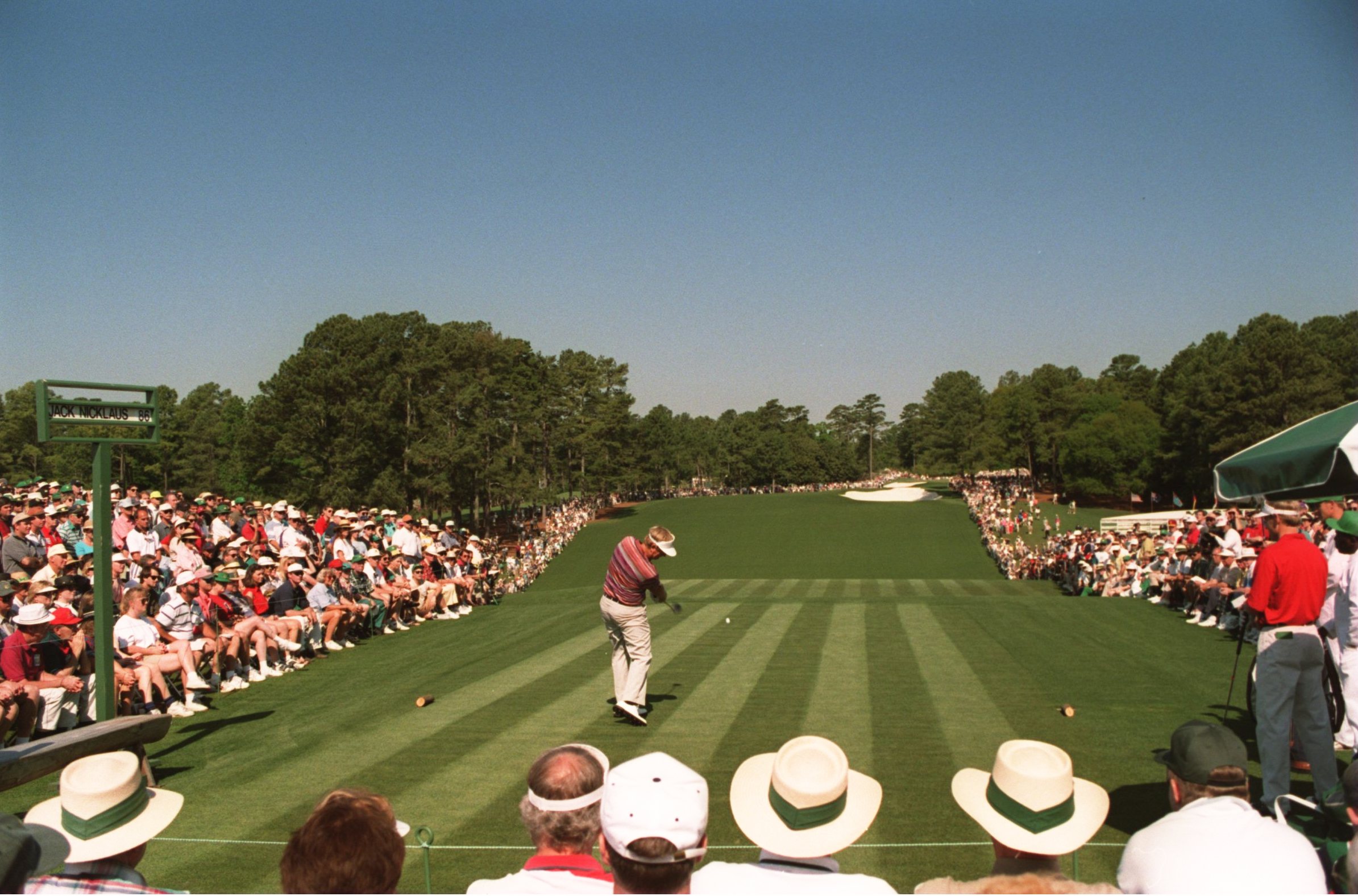
Hole 6: Billy Joe Patton (1954, Final Round)
The legend of Billy Joe goes like this: In 1954, an unheralded, 32-year-old lumber salesman from Morganton, N.C., was invited to play in his first Masters only because he had been an alternate on the 1953 Walker Cup team. While the record books show a Hall-of-Fame finish that year, with Sam Snead edging Ben Hogan in a playoff, the tournament’s real story was Patton. Billy Joe led the field after rounds one and two, then fell back—only to catch the leaders in the final round when he aced the par-three 6th, knocking in a 5-iron from 190 yards. Bedlam.
Spurred on by a partisan gallery, Patton’s surge continued with birdies at 8 and 9. His charge screeched to a halt, however, when he found Rae’s Creek with his fairway-wood second shot at the par-five 13th, ultimately taking a 7. He rallied to birdie 14 but splashed his approach once again at 15. In the end, he tied for third, one shot back. His final, cheerful words to the media were, “But we gave them a few thrills, didn’t we?” He certainly did—with that unforgettable ace at the hole known as “Juniper.”
Hole 7: Tiger Woods (2010, Final Round)
Fifteen eagles have been recorded at the hole known as “Pampas,” five of them by Masters winners. Ernie Els accomplished the feat twice, in 1997 and 2003. For the loudest roar, however, we award top honors to five-time Masters champion Tiger Woods, who penciled in his 2 during the final round in 2010.
Tiger described the putting surface at the 7th as “another green where you can use the slope to get close to the hole. If the flagstick is on the right side, the play is to hit your approach to land in the bowl on that side so the ball can channel down toward it. The pin on the far right, though, is no joke. You just have to put the ball in that same bowl and putt over to the hole. If you short-side yourself there, you have zero chance of getting it up and down.”
Short-siding and putting posed no problems on that special Sunday 15 years ago. From the right side of the fairway, Woods lofted his short iron over the front bunkers, landing his ball in the much-discussed bowl. From there, it rolled to the right and toward the front of the green—right into the cup. Tiger exalted from the fairway, thrusting both arms skyward and flashing his legendary grin. He wouldn’t catch Phil Mickelson on this day, finishing T-4, but his 2 at No. 7 was number one with us.
Hole 8: Bruce Devlin (1967, First Round)
Some remember Australian Bruce Devlin for his years in the broadcast booth, with NBC from 1977–82 and with ESPN from 1983–87. Others know him from his golf course design business, where his name appears on nearly 100 original creations and redesigns, most in conjunction with Robert von Hagge. Yet, serious golf students tip their caps to Devlin the great competitor, one who racked up eight PGA Tour titles and top 10s in all four majors—including the 1967 Masters. Elevating him to that plateau that year was how he played “Yellow Jasmine,” the par-five 8th, in the first round.
Historian Curt Sampson reported that the 29-year-old Devlin ripped a long drive and found his black Spalding Dot sitting “almost as if it had been teed up.” Playing partner Doug Sanders hit his second and then it was Devlin’s turn. To a blind target, Devlin uncorked his black Spalding Elite 4-wood, X-100 shaft, needing a hook to get it onto the green. Devlin’s shot came off perfectly, curving roughly 20 yards to the left. It trundled onto the putting surface…and trickled into the cup for a double eagle 2. Patrons, including Devlin’s father and his 7-year-old son, Kel, cheered though they were unaware who had hit the shot. Devlin’s albatross led him to a 74, and ultimately a tie for 10th. Devlin posted three top 5s at Augusta National from 1964–72, but his name resonates today thanks to one incredible shot that has never been matched.
Hole 9: Tiger Woods (2019, Final Round)
The unique downhill then uphill par-four 9th at Augusta National has yielded 2s in the past, most recently in 2022 to then 23-year-old Chilean Joaquin Niemann, whose 105-yard approach hit 30 feet above the front-center hole location and spun down the slope until it dropped. Yet, my pick for the greatest shot was a putt that didn’t drop, and one where the player scored no better than a par. But what a par!
Midway through 2017, Tiger Woods had entertained the possibility that he might never play golf again due to debilitating physical issues. On Sunday, April 14, 2019, Tiger completed the greatest comeback golf had ever known, winning his fifth green jacket—aided in part by his par at the 9th.
Starting the final round two shots behind British Open champion Francesco Molinari, Woods kept close for most of the front nine, but he looked certain to drop a shot at the 9th, “Carolina Cherry,” when he left his approach 70 feet above the hole on Augusta National’s most severe back-to-front-sloping green, one that embraces three separate tiers. Merely keeping the ball on the green would be an achievement—but this was Tiger Woods, and this was destiny. Woods eased his ball down the slope, and it trickled, and trickled, and trickled.
Woods noted after the round, “I made sure if I made a mistake on that putt, make the mistake of leaving it short up on that middle ridge. Don’t make the mistake of hitting it too hard and having it go off the front of the green. I can walk away with a three-putt and still win this tournament but just don’t make the mistake long and make 6.”
On that wicked 70-foot putt, Tiger conjured up a memory of his father, Earl, who had coached him to “putt for the picture. That’s what he always taught me to do and that’s what I kept telling myself out there, just putt to the picture.” Woods’s lag putt finally stopped trickling, coming to rest at tap-in distance. He had saved par, continued his momentum, and kept pace with Molinari. On the second nine, he played superior strategic golf and watched as others committed monumental blunders. When Brooks Koepka pulled his 10-foot birdie putt on the final hole, all Woods needed was a bogey to claim the comeback of the ages—and his fifth Masters victory.


